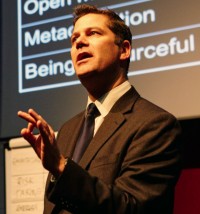How do you define ‘progress’ in schools?

The concept of progress needs to be carefully and collectively understood by teachers and pupils alike in order for it to be meaningful, says Will Ord

- by Will Ord

“Is it progress if a cannibal is using a knife and fork?”
Stanislaw Jerzy Lec
‘Progress’ is often seen as education’s – perhaps society’s – holy grail. It’s endlessly demanded of everyone. Understandably so! The idea of learning or developing without progress would be absurd.
However, as Lec’s delightful quote implies, the concept of progress needs to be carefully and collectively understood by teachers and pupils alike in order for it to be meaningful.
Progress is a concept, and concepts can be investigated in terms of types and levels.
We’re often obsessed with students’ levels, or degrees, of progress – but we can be guilty of ignoring the types of progress made.
What kinds of progress might there be in the process of learning? Are we looking at advances in knowledge, understanding, processes, motivation, breadth or depth of topic, skills or social/emotional/cognitive abilities? And how do we adapt our evaluations and assessments to cater for each type and in every subject?
The concept of progress is also value laden. For example, in our education system, progress in some subjects is often valued above others (eg maths versus dance).
Do we perceive and agree with this value system? What kinds of progress are undervalued or ignored in our schools? How can we avoid the pitfalls of merely valuing what is measurable, as opposed to measuring what is really valued?”
4 ways to make it work for you
1. Discuss values What types of progress do your learners and colleagues value? Explore the concept of progress with them by getting them to list what they see as the various types of progress that are possible in life/learning.
Ask them to rank their lists from least to most important, and discuss the similarities and differences between their responses.
2. Let students judge Place five posters around the classroom reading: ‘more facts’; ‘more questions’; ‘more perspectives’; ‘more ideas’; and ‘more confused’.
Halfway through the lesson, or at the end, students stand next to the poster that best describes the type of progress they feel they have made, and write examples and explanations on it.
3. Celebrate confusion Make it clear to learners that feelings of uncertainty or ‘stuckness’ are a natural part of learning something new and an integral part of moving forwards in their understanding.
Establish an ethos in your classroom where ‘daring to get stuck’ or ‘stepping into the realm of confusion’ is acknowledged as the beginning of learning, not the end of it!
4. Record achievements We can all easily lose perspective in the face of a difficult experience, disregarding those important little successes that have punctuated our day. Help learners to stay mindful of what they have achieved by getting them into the habit of reviewing and cataloguing them, either throughout the lesson, or at the end.
This article has been adapted from Best of the Best: PROGRESS (Crown House), curated by Isabella Wallace and Leah Kirkman, and featuring some of the most influential voices in education.










